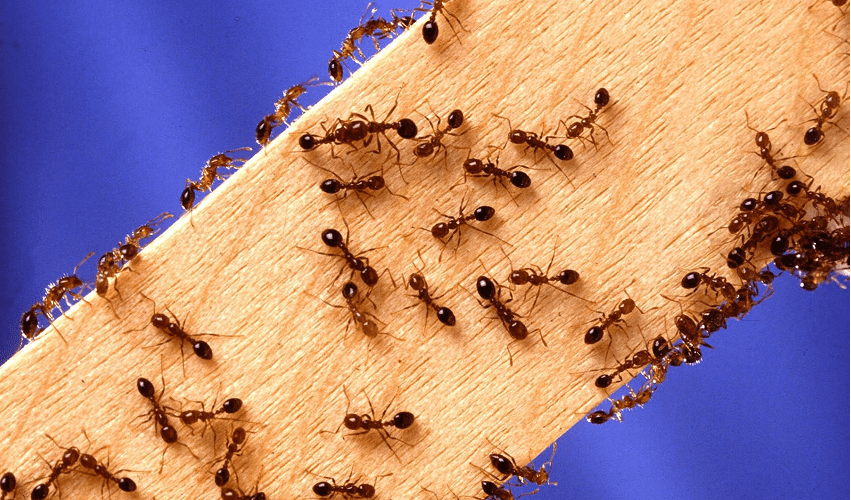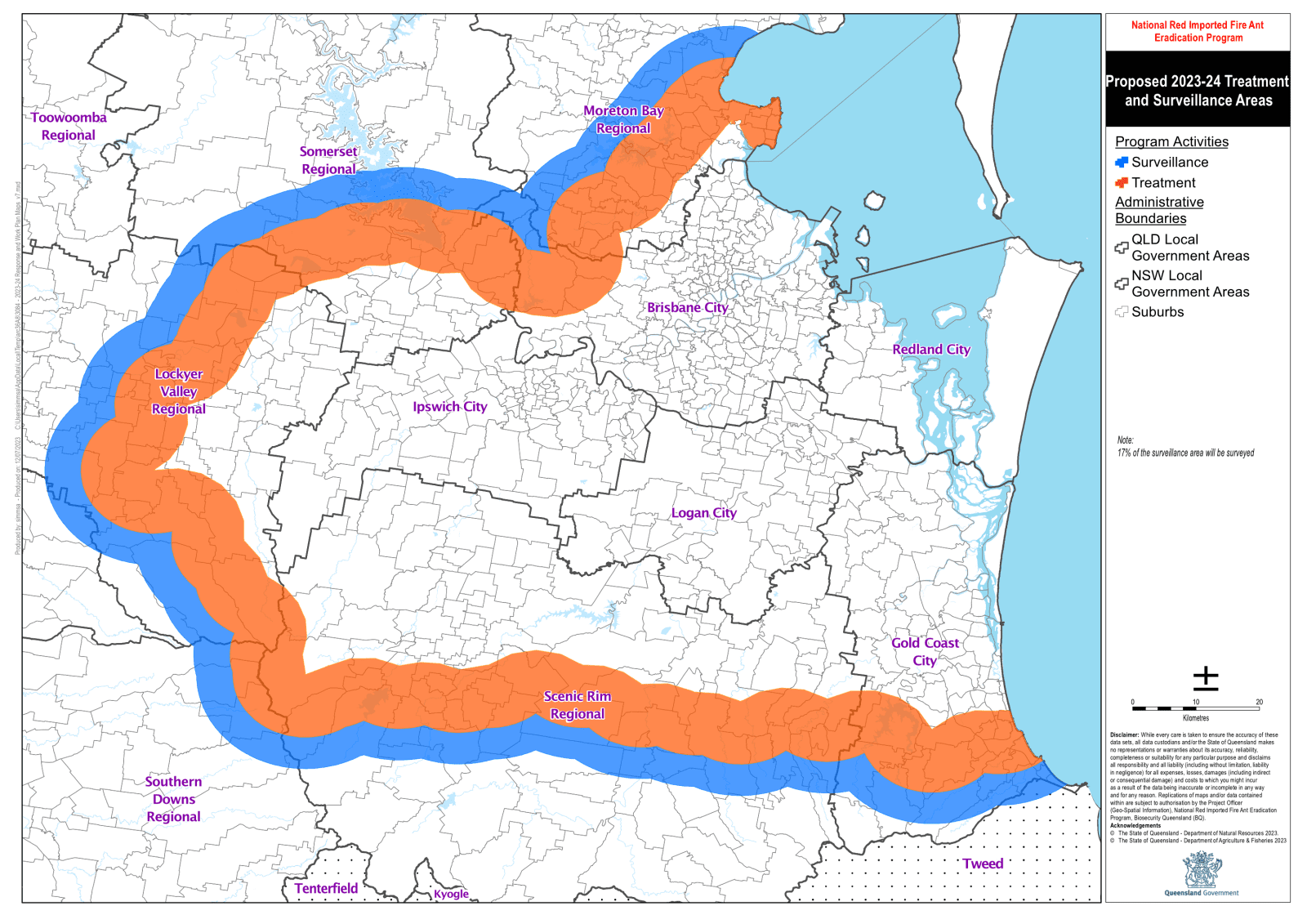
Fire ants have the potential to cause billions of dollars worth of damage to the Australian economy. Photo WA DPIRD
A SENATE report on the eradication efforts targeting fire ants in south-east Queensland has highlighted a severe and concerning lack of transparency from the primary organisation responsible for administering the program aimed at halting the spread of this destructive pest.
Titled Red imported fire ants in Australia: Don’t let this come back to bite us, the report was scathing of the Queensland Government-led National Fire Ant Eradication Program (NFAEP) and its treatment of research organisations and the public sector when it came to collaborating on eradication activities to control the pest.
The report, which followed a six-month inquiry by the Rural and Regional Affairs and Transport References Committee, also called for an urgent review into the current levels of funding and more resources for public self-treatment in the infestation zone and public awareness campaigns.
Committee calls for CRC
The committee, which presented ten recommendations to the Federal Government, has called for the creation of a dedicated Cooperative Research Centre to drive understanding of red fire ants in Australia.
The release of the report comes as the NFAEP announced that fire-ant nests had been detected at Oakey, west of Toowoomba.
The discovery marks the westernmost detection of fire ants in Qld, prompting concerns owing to its proximity to the Murray-Darling Basin and highly productive grain and livestock regions.
In his foreword, Qld senator and committee chair Matt Canavan said eradicating fire ants from south-east Queensland was “perhaps Australia’s greatest current biosecurity challenge”.
“The risk of a wider outbreak of red imported fire ants is high given they have evaded all attempts to eradicate them over two decades,” Mr Canavan said.
“The consequence of a broader outbreak is severe affecting agriculture, native species, and human health.”
It is estimated that fire ants could cost Australians $2 billion per annum and reduce agricultural output by 40 percent.
Although no research into Australian cropping exists, infestation in the United States have reported a 65pc reduction in corn yield.
A recent study by the Australian Institute also found that, if left uncontrolled, fire ants could cost Australians more than $22B by the 2040s.
Mr Canavan said government had so far taken little action to implement findings from a major review into the fire-ant program conducted in 2021, which found an extra $200-$300M in funding a year for ten years was urgently required.
He said alongside funding, all levels of government and the NFAEP had failed to sufficiently involve industry and the public in the eradication efforts.
This issue was “of particular concern to the committee”, who noted accounts of the NFAEP withholding documents and data and requests for collaboration from researchers being “ignored or dismissed”.
“Australia’s red imported fire ant response has been hampered by shortfalls in funding, excessive bureaucracy, insufficient coordination between different levels of government, a lack of transparency and a reluctance to involve industry and the private sector in solutions.
“This report finds that there is a severe lack of transparency in the plans to eradicate red imported fire ants, and more cooperation with the non-government sector should be undertaken to ensure that any governmental response is leveraging off the widest amount of knowledge available.”
The committee pointed out that the NFAEP was yet to release the full Fire Ant Response Plan 2023-27, despite it being the document which will drive eradication activities for the next three years.
Mr Canavan said there was “no logical and coherent reason for this plan to be hidden from the public” and could be an explanation for the confusion in some communities around the eradication program.

The proposed 2023-2024 surveillance and treatment area which is part of the, as yet unreleased, Fire Ant Response Plan 2023-24. Source: NFAEP
Support for recommendations
National advocacy organisation, the Invasive Species Council called the report “damning” and appealed to the Federal Government to “conduct an urgent review of fire-ant eradication funding”.
“The Prime Minister and Minister Murray Watt and state and territory governments must act on these urgent recommendations to get fire ant eradication back on track,” Invasive Species Council advocacy manager Reece Pianta said in a statement.
“Governments that let fire ants spread will be judged harshly by future Australians.”
NSW Farmers president Xavier Martin said it was critical governments scaled up biosecurity funding and efforts to eradicate the ants before it was too late.
Concerned by the recent spread of the pest into northern NSW, Mr Martin said there was “no room for inaction or error when it comes to a threat as significant as this.”
“If we don’t throw everything we can at fire ants to stop them in their tracks, we will be left with land and water that we cannot use to produce the food that feeds our nation, and a deadly pest that is changing our way of life in our communities,” Mr Martin said.
Oakey infestation
The release of the report was somewhat overshadowed by the announcement of a new fire-ant infestation found at Oakey.
An NFAEP statement said a member of the public had reported the nests on April 16 and surveillance and treatment work was under way.
The NFAEP said eradication activities would occur up to 5km out from the detection site to protect the area and ensure no undetected fire ants remained.
NFAEP executive program director Ashley Bacon said compliance and tracing investigations were also underway to help determine how the ants arrived in the area.
“This detection is concerning, but we do have procedures in place deal with it,” Mr Bacon said.
“We have managed outlier detections before, and we will do it again.
Shadow Agriculture Minister and Member for Maranoa David Littleproud said the Oakey detection was extremely concerning, given this area is at the tip of the Murray-Darling Basin.
“The worrying thing about the Oakey detection is that if fire ants get up above the Great Dividing Range, it could potentially get into the Murray-Darling Basin and that could effectively see the fire ants go right down to Adelaide,” Mr Littleproud said.
“It would impact the whole country and have devastating consequences.”
Fire ants were first detected in south-east Queensland in 2001 and have since spread throughout the Brisbane, Ipswich, Gold Coast and Lockyer Valley regions.
Further recent detections in Toowoomba in June 2023, and in NSW in South Murwillumbah in November 2023 and Wardell in January 2024 have raised the urgency to eradicate the pest.



HAVE YOUR SAY